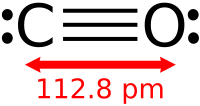
Photo from wikipedia
Organic frameworks with carbon-carbon (C-C) linkage are an important class of materials owing to their outstanding chemical stability and extended π-electron delocalization resulting in unique optoelectronic properties. In the first… Click to show full abstract
Organic frameworks with carbon-carbon (C-C) linkage are an important class of materials owing to their outstanding chemical stability and extended π-electron delocalization resulting in unique optoelectronic properties. In the first part of this review article, we have summarized the design principles for the bottom-up synthesis of 2D and 3D sp/sp2 C-C linked organic frameworks. We have included representative reaction methodologies, such as Knoevenagel condensation, Aldol condensation, Horner-Wadsworth-Emmons reaction, Wittig reaction, and coupling reactions (Ullmann, Suzuki, Heck, Yamamoto, etc.). This is discussed in the context of their reaction mechanism, reaction dynamics, and whether and why resulting in an amorphous or crystalline product. This is followed by a discussion of different state-of-art bottom-up synthesis methodologies, like solvothermal, interfacial, and solid-state synthesis. In the second part, we analyzed the structure-property relationships in C-C linked organic frameworks with representative examples of organocatalysis, photo(electro)catalysis, energy storage and conversion, magnetism, and molecular storage and separation. The importance of linkage type, building blocks, topology, and crystallinity of the framework material in connection with the structure-property relationship is highlighted. Finally, brief concluding remarks are presented based on the key development of bottom-up synthetic methods and provide perspectives for future development in this field. This article is protected by copyright. All rights reserved.
Journal Title: Macromolecular rapid communications
Year Published: 2023
Link to full text (if available)
Share on Social Media: Sign Up to like & get
recommendations!